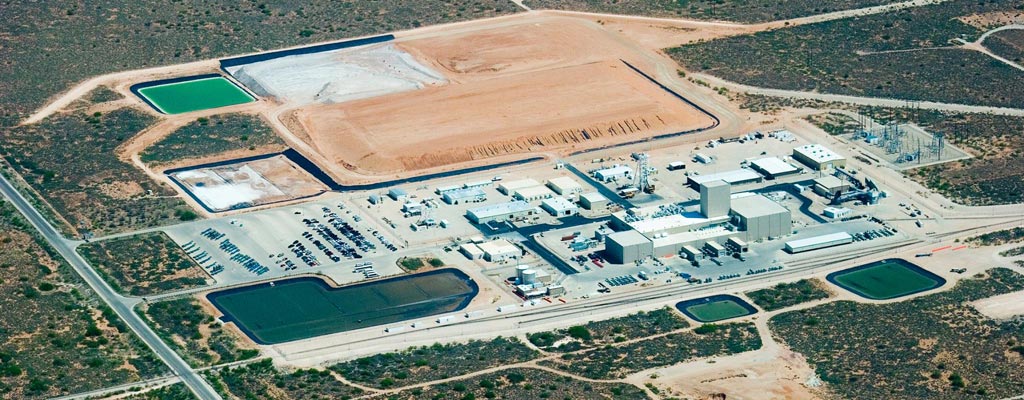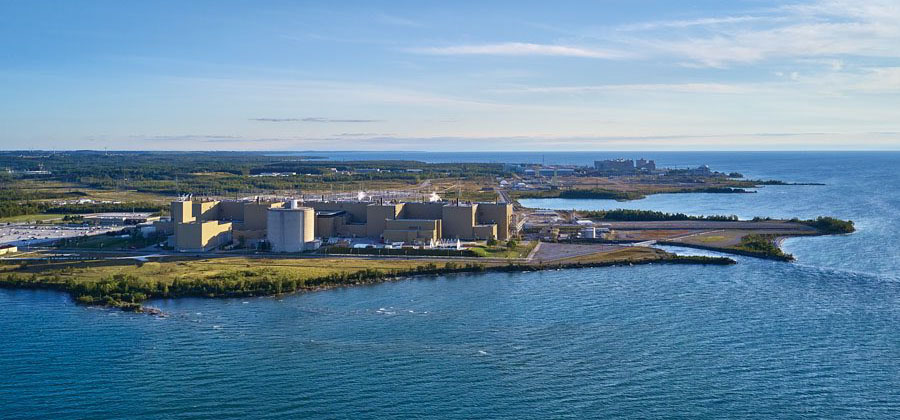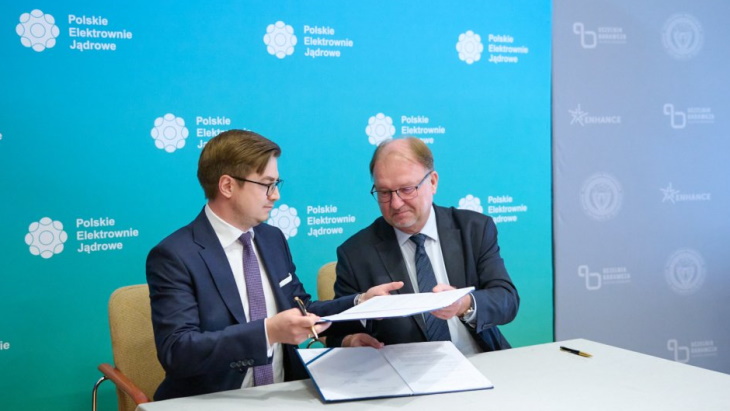Go with the flow
Nuclear thermal hydraulics—for light water reactors or advanced reactors cooled by gas, metal, or salt—is all about defining safety and performance margins as things heat up.
Published since 1959, Nuclear News is recognized worldwide as the flagship trade publication for the nuclear community. News reports cover plant operations, maintenance and security; policy and legislation; international developments; waste management and fuel; and business and contract award news.

A message from NV5, Inc.
Seconds Matter: Rethinking Nuclear Facility Security for the Modern Threat Landscape
Nuclear thermal hydraulics—for light water reactors or advanced reactors cooled by gas, metal, or salt—is all about defining safety and performance margins as things heat up.

Energy and security company IP3 has announced an agreement with Green Energy Partners (GEP), a property and project development firm, to pursue clean energy projects by establishing the Surry Green Energy Center “to implement innovative commercial plans targeting baseload and industrial energy needs in Virginia.”
Nuclear research reactors throughout the world enable crucial scientific progress that benefit many sectors, health care and the environment among them. But some of those reactors need an important adjustment: a conversion from using high-enriched uranium fuel to using low-enriched uranium fuel.
The Nuclear Regulatory Commission has directed its staff to issue a final rule and associated regulatory guide that applies risk-informed, performance-based emergency preparedness requirements to small modular reactors and other new technologies, the agency announced on August 14. The technologies include non–light water reactors, research and test reactors, and medical radioisotope facilities.

Québec government–owned utility Hydro-Québec, Canada’s largest power provider, is looking into the feasibility of restarting Unit 2 at the Gentilly nuclear power plant, various Canadian news outlets reported last week.
The Department of Energy’s Office of Science announced $112 million in funding on August 14 for 12 projects designed by fusion scientists, applied mathematicians, and computer scientists to apply high-performance computing and exascale computers to complex fusion energy problems.
The list of projects and more information can be found on the Fusion Energy Sciences homepage.

The Department of Energy today announced a noncompetitive financial assistance cooperative agreement with Southeast New Mexico College, located in Carlsbad, N.M., for educational programs to enhance the knowledge, skills, and abilities of current Waste Isolation Pilot Plant employees while also building and training WIPP’s next-generation workforce.
The Department of Commerce’s Bureau of Industry and Security (BIS) has expanded the scope of its nuclear-related export controls on China and Macao (a special administrative region in southeastern China) by establishing additional nuclear nonproliferation controls and license requirements for items that could “contribute to nuclear activities of concern.” The BIS stated that the action, effective August 11, was taken in response to China’s military modernization and nuclear force expansion.

Rezin

Pritzker
Nuclear advocates may have applauded Illinois Gov. J.B. Pritzker two years ago when he signed legislation providing $694 million to three of the state’s struggling nuclear power plants, but they’re hissing him now: On Friday, Pritzker vetoed S.B. 76, a bill that would have lifted the state’s decades-old moratorium on new nuclear power plant construction.
Introduced in January by Sen. Sue Rezin (R., 38th Dist.), S.B. 76 called for deleting language in the Illinois Public Utilities Act that forbids nuclear plant construction in the state until the Illinois Environmental Protection Agency determines that the federal government “has identified and approved a demonstrable technology or means for the disposal of high-level nuclear waste, or until such construction has been specifically approved by a statute enacted by the General Assembly.”

As global concerns about climate change and energy sustainability intensify, the need for cleaner and more efficient energy sources is more critical than ever. Nuclear power consistently emerges as an important part of the solution, driving the development of innovative technologies. While numerous fission technologies were built and proven in the early days of nuclear energy, times and regulations have changed. Between the 1950s and mid-1970s, Idaho National Laboratory built 52 reactors—then paused for five decades. Can this nation return to the frontier once again, embarking on new fission technologies? With a mature regulatory environment and increasing public support, how quickly can a new non–light water system be deployed in modern times?

The International Atomic Energy Agency has carried out the first mission of its Disused Sealed Radioactive Sources Technical Centre peer review service, or DSRS TeC, at the Thailand Institute of Nuclear Technology (TINT) in Bangkok. Held July 18–21, the inaugural mission was supported by funds from the United States.

General Fusion announced on August 9 that it will build a fusion machine called Lawson Machine 26 (LM26) at the company’s new headquarters in the city of Richmond, British Columbia, near Vancouver. The machine is intended to achieve fusion conditions of over 100 million degrees Celsius by 2025 and progress toward scientific breakeven by 2026 to support the company’s vision of commercial fusion energy by the early to mid-2030s.
More than 700 registered attendees descended on Florida’s Marco Island for the ANS Utility Working Conference this week, with many traveling through a wave of severe storms to get there—a fitting start to a meeting themed “Building Resiliency in a Rapidly Changing World.”
Three days of panels and educational sessions formally opened on Monday, August 7, with a plenary on “The Nuclear Industry’s State of Resiliency” featuring three invited speakers: Annie Caputo, NRC commissioner; Bob Willard, president and chief executive officer of the Institute of Nuclear Power Operations; and Jeff Lyash, president and CEO of the Tennessee Valley Authority. Matthew Rasmussen, general chair of the UWC and senior vice president for engineering and operations support at TVA, introduced the speakers following opening remarks from ANS President Kenneth Petersen and ANS Executive Director/CEO Craig Piercy. Together, the plenary speakers pointed to challenges ahead in ensuring effective leadership, nuclear plant resilience, and energy security—and found cause for celebration in the recent and long-awaited announcement of commercial operation at Vogtle-3.

The Department of Energy’s Hanford Site has introduced its newest team members, Dee and Freda, two highly skilled explosive-detecting K-9 officers. The police dogs will work with Richland Operations Office contractor Hanford Mission Integration Solutions to help ensure the safety and security of the legacy nuclear reservation near Richland, Wash.

The Swedish Radiation Safety Authority (SSM) has issued a final report to the Swedish government regarding its investigation into how the regulatory framework for the country’s nuclear power might be improved.
Young members have always been an asset to the American Nuclear Society, attending the Annual and Winter Meetings; joining Society divisions, groups, and student sections; and leading their own events and webinars. ANS would like to highlight some of its young members for their contributions to bringing nuclear energy to the larger world beyond our industry.

Unit 6 at the Bruce nuclear power plant in Kincardine, Ontario, achieved a sustained fission chain reaction over the weekend—a key step in returning the 817-MWe CANDU reactor to commercial operation, Bruce Power announced yesterday.
![]() Here is a recap of industry happenings over the past month:
Here is a recap of industry happenings over the past month:
International SMR collaboration launched
The nine member states of the International Nuclear Regulators’ Association (INRA)—Canada, France, Germany, Japan, South Korea, Spain, Sweden, the United Kingdom, and the United States—have agreed to collaborate on the generic design assessment and licensing of small modular reactor technologies. According to a statement released by the organization, the internationally standardized reactor designs would aid in the facilitation of efficient regulatory reviews, although local issues such as siting and environmental factors must be addressed by national regulatory agencies. The INRA members expressed their support for the International Atomic Energy Agency’s Nuclear Harmonisation and Standards Initiative, but they stressed that independent, national regulatory reviews should not be replaced by an international approach.

Łukasz Młynarkiewicz (left), acting president of PEJ, and Krzysztof Zaremba, rector of the Warsaw University of Technology, signed an agreement on August 7 regarding the training of personnel for Poland’s nuclear energy program. (Photo: Warsaw University of Technology)
Polskie Elektrownie Jądrowe (PEJ), the state-owned firm set up to lead Poland’s efforts to establish a civil nuclear power program, signed an agreement yesterday with the Warsaw University of Technology to cooperate on the training of personnel for the nuclear sector.
The agreement provides for “substantive and research cooperation” as well as “cooperation in the development and implementation of scholarship programs [and] co-organization of competitions for scientific works or design competitions,” PEJ said in a news release. PEJ and the university will also work together on a curriculum to enable graduates to gain the knowledge and skills necessary to find employment in the nuclear energy field, the company added.
According to Poland’s Ministry of Climate and Environment, there are already some 80 companies operating in the Central European nation that provide services to nuclear technology vendors worldwide, with another 300 ready to join the nuclear supply chain.

Three college interns from the Savannah River Site were the keynote speakers at a recent Up & Atom Breakfast hosted by Citizens for Nuclear Technology Awareness (CNTA). The breakfast was held at Newberry Hall in Aiken, S.C.